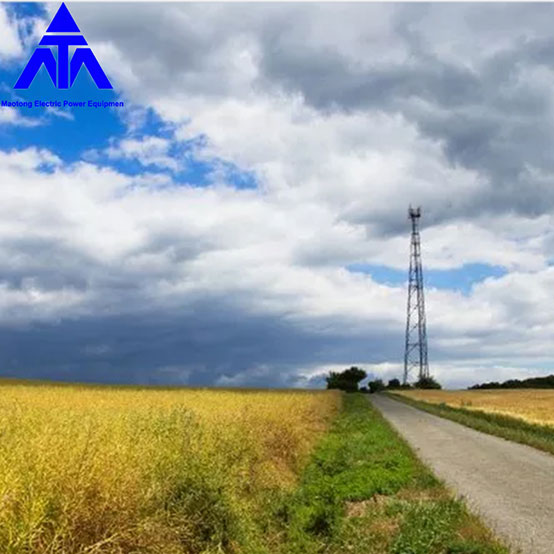Ensuring Quality and Safety: The Importance of Compliance with Industry Standards for High-Density Telecommunication Tower Steel Pipes
2024-02-20
In the dynamic realm of telecommunications infrastructure, where reliability, durability, and safety are paramount, adherence to industry standards and regulations is crucial. High-density telecommunication tower steel pipes serve as the backbone of modern network deployments, providing the structural support necessary to withstand environmental challenges and support the expansion of telecommunications networks. Let's explore the significance of compliance with industry standards and regulations in the manufacturing and installation of these critical components.
Ensuring Structural Integrity
Adherence to industry standards and regulations ensures that high-density telecommunication tower steel pipes are designed, manufactured, and installed to meet stringent structural requirements. Standards set forth by organizations such as the American Society for Testing and Materials (ASTM) and the American Institute of Steel Construction (AISC) establish guidelines for the mechanical properties, dimensions, and quality control processes of steel pipes. Compliance with these standards ensures the structural integrity of steel pipes, minimizing the risk of failure and ensuring the safety of telecommunications infrastructure.
Quality Assurance and Consistency
Industry standards provide a framework for quality assurance and consistency throughout the manufacturing and installation process of high-density telecommunication tower steel pipes. By adhering to established standards, manufacturers and installers can implement robust quality control measures, including material testing, dimensional checks, and weld inspections, to ensure that steel pipes meet specified requirements. Consistent adherence to industry standards helps maintain uniformity in product quality and performance, reducing variability and enhancing reliability across telecommunications infrastructure deployments.
Environmental and Safety Considerations
Compliance with industry standards and regulations also encompasses environmental and safety considerations related to the manufacturing and installation of high-density telecommunication tower steel pipes. Standards such as those set forth by the Occupational Safety and Health Administration (OSHA) establish guidelines for workplace safety, including proper handling, storage, and installation procedures for steel pipes. Additionally, environmental regulations may govern the use of coatings, treatments, and materials to minimize environmental impact and ensure compliance with local regulations.
Interoperability and Compatibility
Industry standards play a crucial role in promoting interoperability and compatibility among telecommunications infrastructure components. By adhering to standardized specifications and dimensions, high-density telecommunication tower steel pipes can seamlessly integrate with other network elements, such as antennas, transceivers, and equipment enclosures. Compatibility ensures that telecommunications infrastructure can be easily expanded, upgraded, or replaced without compatibility issues or interoperability challenges, promoting efficiency and scalability in network deployments.
Legal and Liability Considerations
Compliance with industry standards and regulations carries legal and liability implications for manufacturers, installers, and network operators. Non-compliance with established standards may result in legal consequences, fines, or penalties, as well as potential liability for accidents, injuries, or property damage caused by substandard telecommunications infrastructure. Adhering to industry standards helps mitigate legal risks and liabilities, ensuring that telecommunications infrastructure meets recognized safety, performance, and quality criteria.
Conclusion
In the complex and ever-evolving landscape of telecommunications infrastructure, compliance with industry standards and regulations is paramount to ensuring quality, safety, and reliability. High-density telecommunication tower steel pipes, as critical components of modern network deployments, must adhere to established standards and specifications throughout the manufacturing and installation process. By prioritizing compliance, stakeholders in the telecommunications industry can uphold the integrity of infrastructure deployments, enhance safety and reliability, and support the seamless expansion and evolution of telecommunications networks to meet the growing demands of the digital age.



